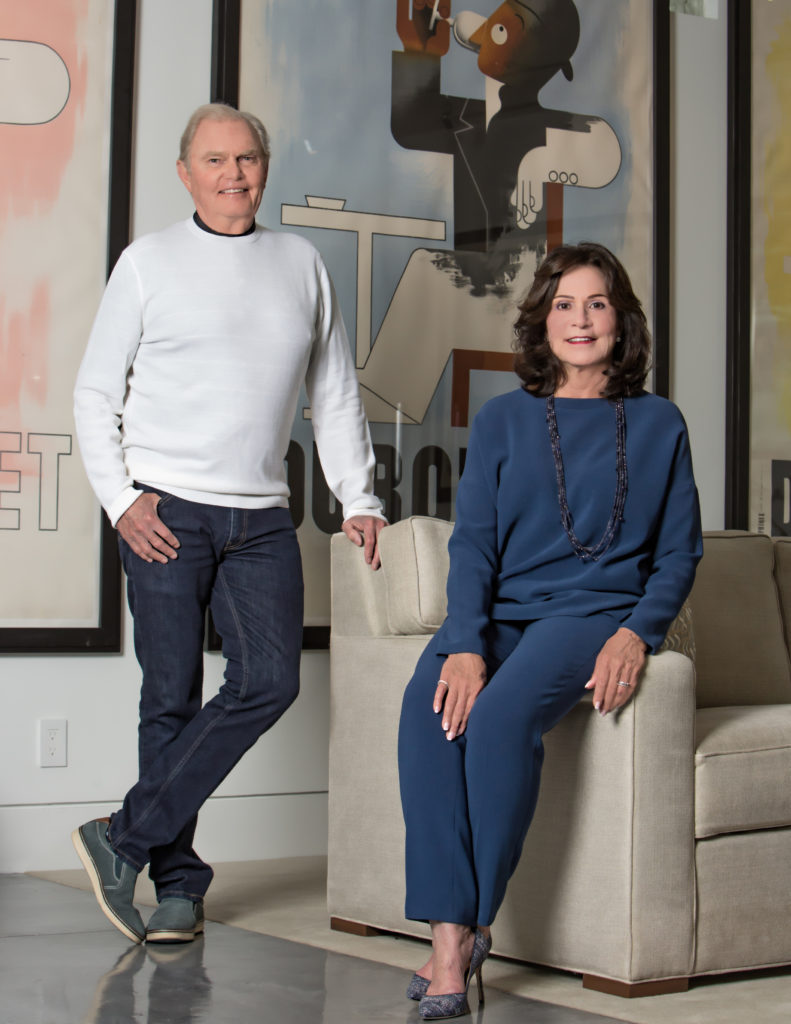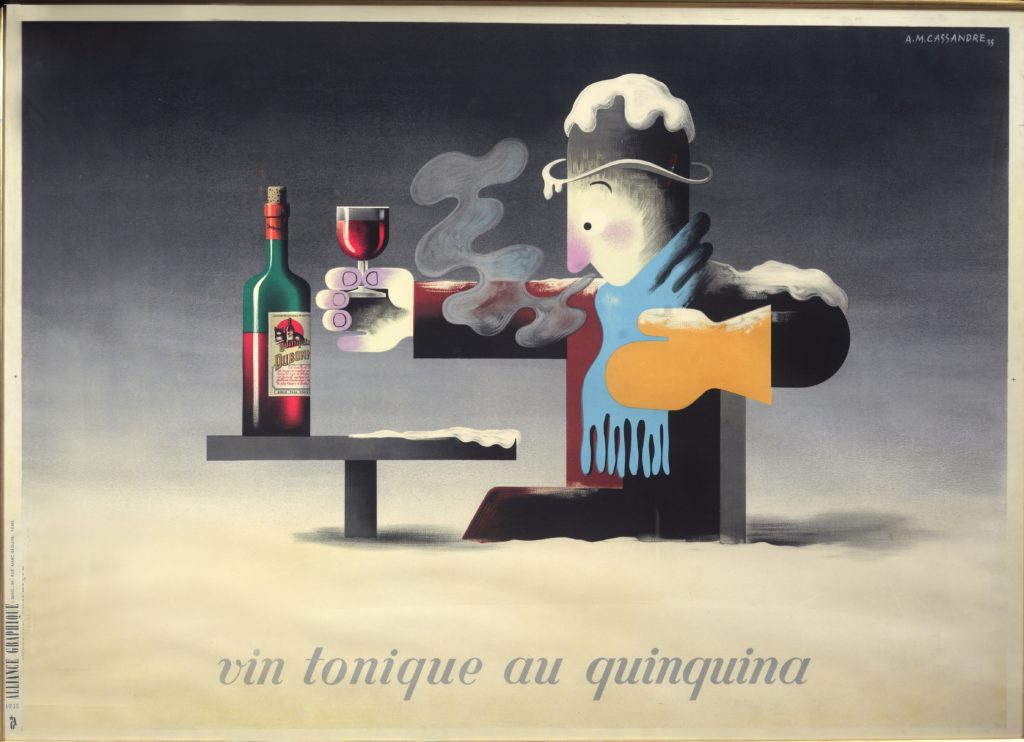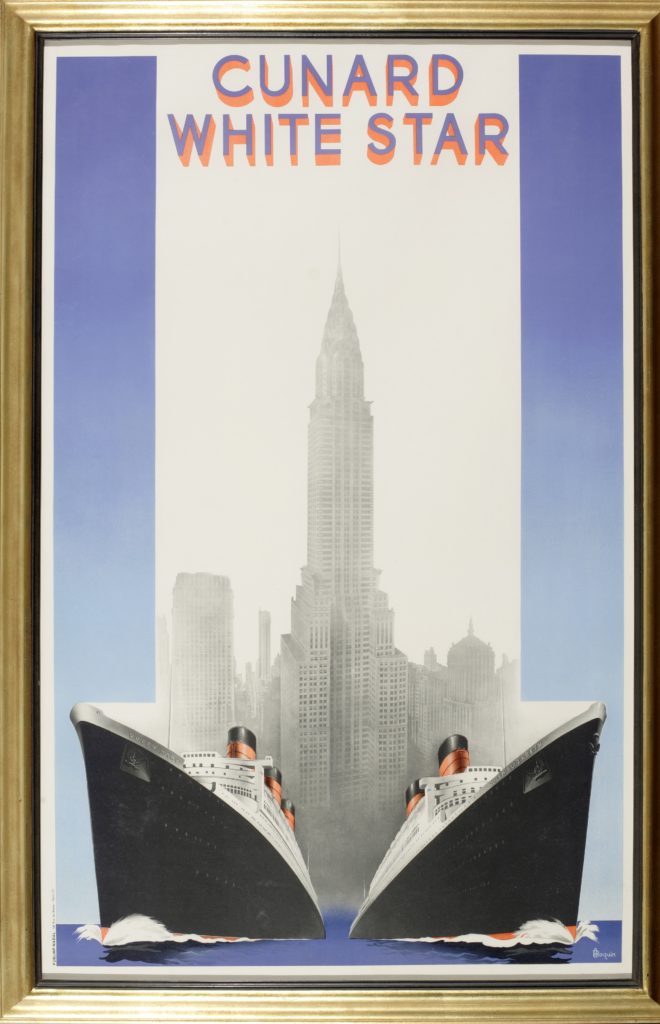
Arts & Culture
The Crouse Collection
Bill and Elaine Crouses’ Incredible Art Deco Poster Collection
By Lauren Antoine
 Visitors flock to Siesta Key for white sand, gulf breezes, and—thanks to Bill and Elaine Crouse—time travel. The Crouses own one of the most important collections of Art Deco posters in the world. Art Deco, also called style modern, was a movement in Europe during the 1920s that then made its way to the United States. Art Deco took its name from the “Exposition Internationale des Art Décoratifs et Industriels Modernes” held in Paris in 1925. With geometric shapes and streamlines, it embraced modernity and the promise of the Industrial Revolution.
Visitors flock to Siesta Key for white sand, gulf breezes, and—thanks to Bill and Elaine Crouse—time travel. The Crouses own one of the most important collections of Art Deco posters in the world. Art Deco, also called style modern, was a movement in Europe during the 1920s that then made its way to the United States. Art Deco took its name from the “Exposition Internationale des Art Décoratifs et Industriels Modernes” held in Paris in 1925. With geometric shapes and streamlines, it embraced modernity and the promise of the Industrial Revolution.
Bill and Elaine’s joy is collecting, displaying, appreciating, and sharing the history and provenance behind posters, sculptures, cocktail shakers, and other artifacts created between 1919 and 1939.
The couple owns thousands of Art Deco posters, most of which they have carefully catalogued and stored. As Bill puts it, “This is a museum collection. It just happens to be in our home.”
Other museums acknowledge that. The Guggenheim, the Victoria and Albert, and a host of U.S. and international galleries knock on the Crouses’ door whenever they’re mounting an Art Deco exhibit. At any one moment, a number of artifacts will be on loan.
In the heyday of building the collection, Bill bought about a hundred posters a year, but in the last five years, he’s acquired less than a dozen. “It would be impossible to duplicate even a small part of this collection today because the posters are no longer available on the market,” says Elaine. “They’re all in museums or in other collectors’ hands.”
“When you go to an auction, you don’t win unless you’re the highest bidder. You don’t like it when the object goes for 10 times what the high estimate is,” Bill says with a laugh.
 Roughly half of the Crouses’ poster collection was created by extremely influential poster artists A.M Cassandre, Jean Carlu, Paul Colin and Charles Loupot. Cassandre, for example, was a well-known French painter, commercial poster artist, and typeface designer. Cassandre created a poster for a furniture store, Au Bucheron, that won first prize at the 1925 Exposition. Some of Cassandre’s best works—Grand-Sport, L’Intransigeant, Dubonnet, and Triplex—are hung proudly in different parts of Bill and Elaine’s home.
Roughly half of the Crouses’ poster collection was created by extremely influential poster artists A.M Cassandre, Jean Carlu, Paul Colin and Charles Loupot. Cassandre, for example, was a well-known French painter, commercial poster artist, and typeface designer. Cassandre created a poster for a furniture store, Au Bucheron, that won first prize at the 1925 Exposition. Some of Cassandre’s best works—Grand-Sport, L’Intransigeant, Dubonnet, and Triplex—are hung proudly in different parts of Bill and Elaine’s home.
These and other Art Deco posters have been preserved for almost 80 to 100 years since their printing. “It’s an art form that never should have survived,” says Elaine. “It was done on very inexpensive paper. It was displayed on the side of a wall or a kiosk to be ripped down in a month or two.”

“Or destroyed by the elements,” adds Bill.
Yet the posters form only a part of the couple’s collection from that expressive time period. Bill has given Elaine broaches created by J.D. Rockefeller’s personal jeweler, Raymond Yard. Fifteen years ago, she presented him at Christmas a Zeppelin-shaped Art Deco martini shaker. From that one piece has grown an exquisite collection of martini shakers, many crafted during Prohibition, and barware that they still use to entertain at dinner parties. Their treasures include “the Holy Grail” of figural cocktail shakers, a model of the first lighthouse in the United States, built in 1716 on Little Brewster Island in Boston Harbor.
Bill and Elaine had been fans of Art Deco even before meeting and marrying. Elaine, who had a career in corporate communications, collected furniture and textiles because of the period’s sustainable and clean design. Bill, a healthcare venture capitalist and pharmaceutical executive, took up collecting to “broaden” himself beyond business. He owned a small collection of Cubist art but turned to Art Deco posters because of its greater potential.
“I was looking to build the best collection on Earth. I wasn’t interested in collecting unless it was at the very highest level,” he says.
Both Crouses enjoy the thrill of the hunt in collecting. But longer-term satisfaction comes from living alongside splendid artifacts and understanding the history behind the Art Deco shapes and lines. Images of trains, planes, ships, cars, dance, Dubonnet—Bill can’t pick a single favorite. “What’s so great about Art Deco posters is that even though they were made so long ago, it feels like they could have been made today,” he says.
 The heart of the collection, which started in Manhattan, moved with the couple to Sarasota. Another part resides in Elaine’s hometown of Pittsburgh. Florida had been far from their first choice for relocation, but Elaine says the natural beauty of Sarasota sold them on the Gulf Coast. “We also knew the arts were very strong in Sarasota,” she says, “and we were hoping to find persons of like mind. It has turned out to be that way.”
The heart of the collection, which started in Manhattan, moved with the couple to Sarasota. Another part resides in Elaine’s hometown of Pittsburgh. Florida had been far from their first choice for relocation, but Elaine says the natural beauty of Sarasota sold them on the Gulf Coast. “We also knew the arts were very strong in Sarasota,” she says, “and we were hoping to find persons of like mind. It has turned out to be that way.”
They landed on Casey Key in 2004. After much searching, they bought their current home on Siesta Key. The one-of-a-kind Guy Peterson house was a perfect fit; however, in order to best showcase their collections, they completely remodeled the interior, exterior, and even the landscaping.
The Crouses welcome others into their private museum. They host fundraisers and invite visits from the arts and education communities. Christopher Wilson, an instructor at Ringling College of Art and Design, teaches a class in Art Deco and regularly brings students to tour the Crouses’ home. After a first-hand experience of Art Deco posters, students create their own version. Bill and Elaine judge how closely these posters capture the aesthetic of the ones made during that period.
With the collection nearing its peak, Bill and Elaine are minding its legacy. Bill has committed much of his knowledge about the creation and provenance of the posters to two books: The Art Deco Posters and Grand Prix Automobile de Monaco Posters, The Complete Collection: The Art, The Artists and the Competition, 1929-2009.
The Crouses have also set up a foundation. Although museums would love to have the posters and other art (along with an endowment), keeping the Art Deco collection private allows more flexibility and public access. The Crouses have no desire for their beloved artifacts to spend years in a vault.
“We want to make the art available to any place that wants to exhibit it,” says Bill.
Writer Lauren Antoine is one of the awestruck Ringling College students who visited the Crouses on Christopher Wilson’s class field trip.




You must be logged in to post a comment Login